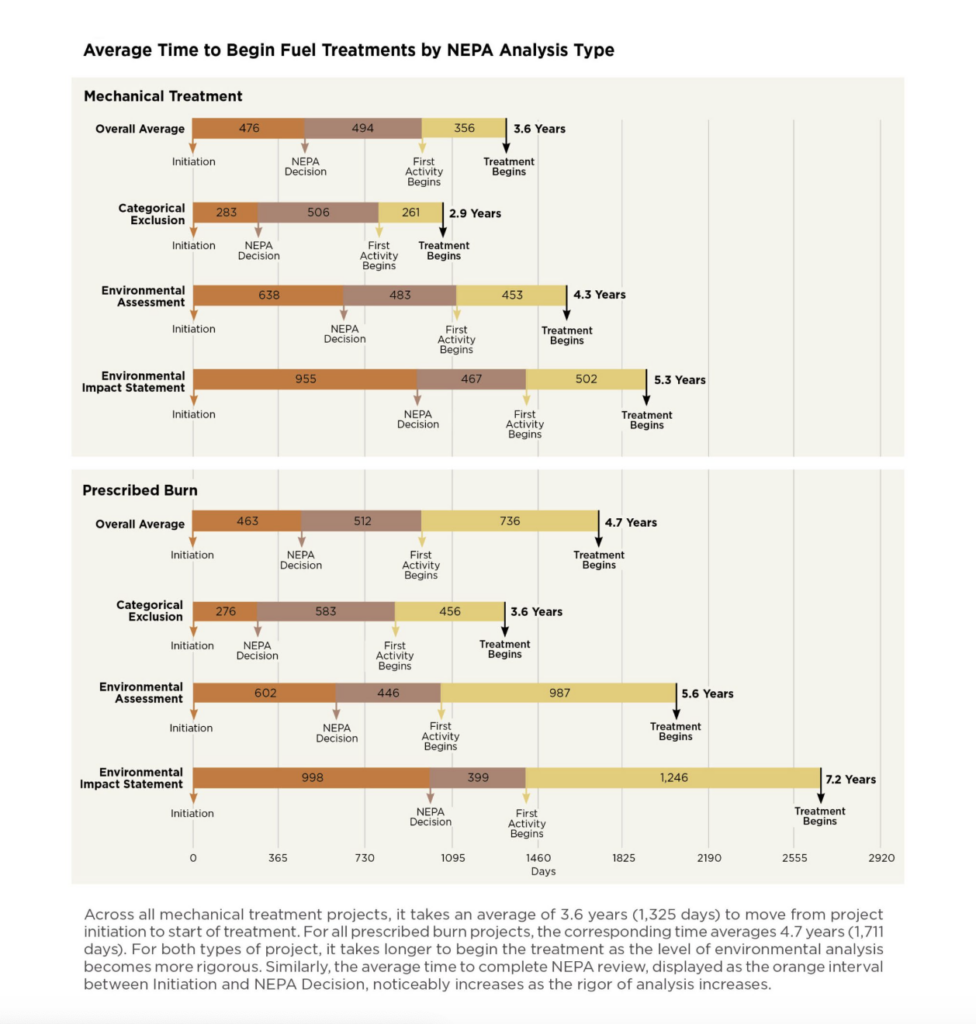From Plans To Reality: The Vital Role of Categorical Exclusions In Forest Restoration Projects
"The focus must be on expediting good projects to remove excess fuels in our forests, not limiting the use of good tools."
Key Points
- Categorical exclusions are an important tool that allow forest projects aimed at reducing wildfire risk and enhancing forest resilience to commence more quickly.
- Despite their importance, a Ninth Circuit ruling has significantly hindered the Forest Service’s ability to utilize categorical exclusions in many western states, severely impeding the agency’s capacity to carry out forest restoration efforts.
- Instead of limiting categorical exclusions, we should be expanding them to help reduce litigation over forest projects and ensure our forest restoration efforts can begin before it’s too late.
Background
Driving through western Montana this past Sunday evening, I saw the smoke plumes of the Miller Peak Fire building in the sky. It is, unfortunately, an all too common sight around the state this time of year and I knew immediately what it was. With at least nine new fires just this past weekend, our communities are bracing for wildfire season. These catastrophic blazes threaten human life, damage our watersheds, destroy wildlife habitat, and pollute our air.

The Miller Peak Fire outside of Missoula captured at 5:30pm on Sunday, July 14 from I-90.
Large and destructive wildfires are becoming more common across the West. Although several factors contribute to this trend, the declining health of our nation’s forests is a primary cause. Our forests are filled with excess dead and dying trees, brush, and other fuels—to the point where an area larger than the state of California is in need of restoration. Removing those fuels through mechanical thinning and prescribed fire are urgently needed to reduce wildfire damage and promote forest resilience. A new meta-analysis published in the journal Forest Ecology and Management found that combining mechanical thinning with prescribed burns reduces the severity of subsequent wildfires in an area by 62-72 percent.
While the good news is that we know how to reduce wildfire risk through forest restoration activities, the bad news is it is exceptionally difficult to get that work done on the ground and at the scale needed. Before any chainsaws or drip torches can touch a federal forest, a restoration project must navigate complex bureaucratic procedures, including review under the National Environmental Policy Act (NEPA). Stringent reviews under NEPA can take years, so policymakers have created categorical exclusions to exempt certain activities from the NEPA review process. Congress has, for example, categorically excluded collaboratively developed forest projects designed to reduce hazardous fuels and wildfire risk and other forest restoration projects designed to help mule deer and sage grouse habitat.
The Forest Service heavily depends on categorical exclusions to help get work done. In an appearance before the U.S. House Natural Resources Committee earlier this month, Forest Service Chief Randy Moore emphasized that 87 percent of the agency’s NEPA compliance is done through categorical exclusions.
The Lawsuit
Recently, however, the Ninth Circuit Court of Appeals—which oversees Montana and other Western states—ruled to limit the use of categorical exclusions. In Friends of the Inyo v. United States Forest Service the Court held that the Forest Service cannot use categorical exclusions to approve a project unless the entire project fits in a single categorical exclusion. This decision could severely hamper the Service’s ability to conduct forest restoration work as the agency routinely cites multiple categorical exclusions for bigger projects that combine more or more needed actions.
The Impact
Amidst current frustrations over how slow forest restoration activities take place, the process will get even more cumbersome and tangled with this new ruling. For example, PERC researchers found it takes an average of 3.6 years for treatment to begin on a prescribed burn project when a CE is issued. This timeframe extends to 5.6 years when an Environmental Assessment (EA) is conducted and further increases to 7.2 years when an Environmental Impact Statement (EIS) is used. Without the use of CEs, our forests face a significant risk of being destroyed in catastrophic fires while awaiting for a project approval.

Conclusion
The hopeful news is that policymakers in Congress are working to expand the benefits of categorical exclusions. The Farm Bill proposal from the House of Representatives includes policies to expand categorical exclusions focused on healthy forests and reduced wildfire risk to 10,000 acres. The bipartisan Fix Our Forests Act would similarly expand categorical exclusions and reduce litigation over forest projects.
America’s forests are in desperate need of projects to make them healthier and more resilient. Time is of the essence. Our forests can’t wait for us to make up our mind on whether they’re worth saving. Our forest and the wildlife they support are depending on us. It’s time to be proactive in reducing wildfire risk. The focus must be on expediting good projects to remove excess fuels in our forests, not limiting the use of good tools.
